Abstract
Hemophilia B can be divided into at least two mutant forms different from the mild, moderate, and severe categories previously described. In about 90% of hemophilia B patients, PTC-inhibitor-neutralizing activity is reduced in proportion to PTC clotting activity. In about 10% of the patients, PTC-inhibitor-neutralizing activity is fully effective, whereas PTC clotting activity is reduced. Extensive pedigree studies indicate that the presence or absence of inhibitor-neutralizing activity is genetically determined. It is suggested that those hemophilia B mutants with decreased inhibitor-neutralizing material produce decreased amounts of PTC-protein. It is further suggested that those with normal levels of inhibitor-neutralizing material produce normal amounts of PTC-protein, which is structurally altered so as to lose procoagulant activity but which retains inhibitor-neutralizing activity. The latter group may be analogous to CRM+ mutants described in bacteria and Neurospora.
Full text
PDF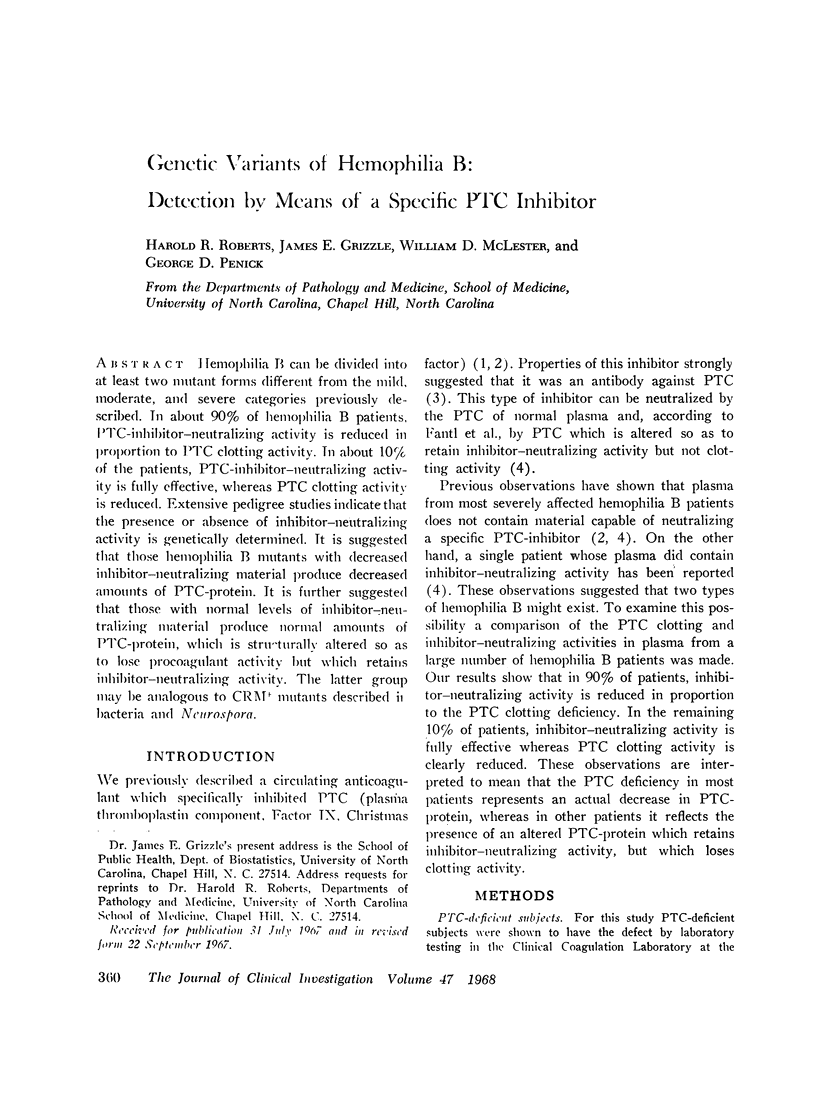
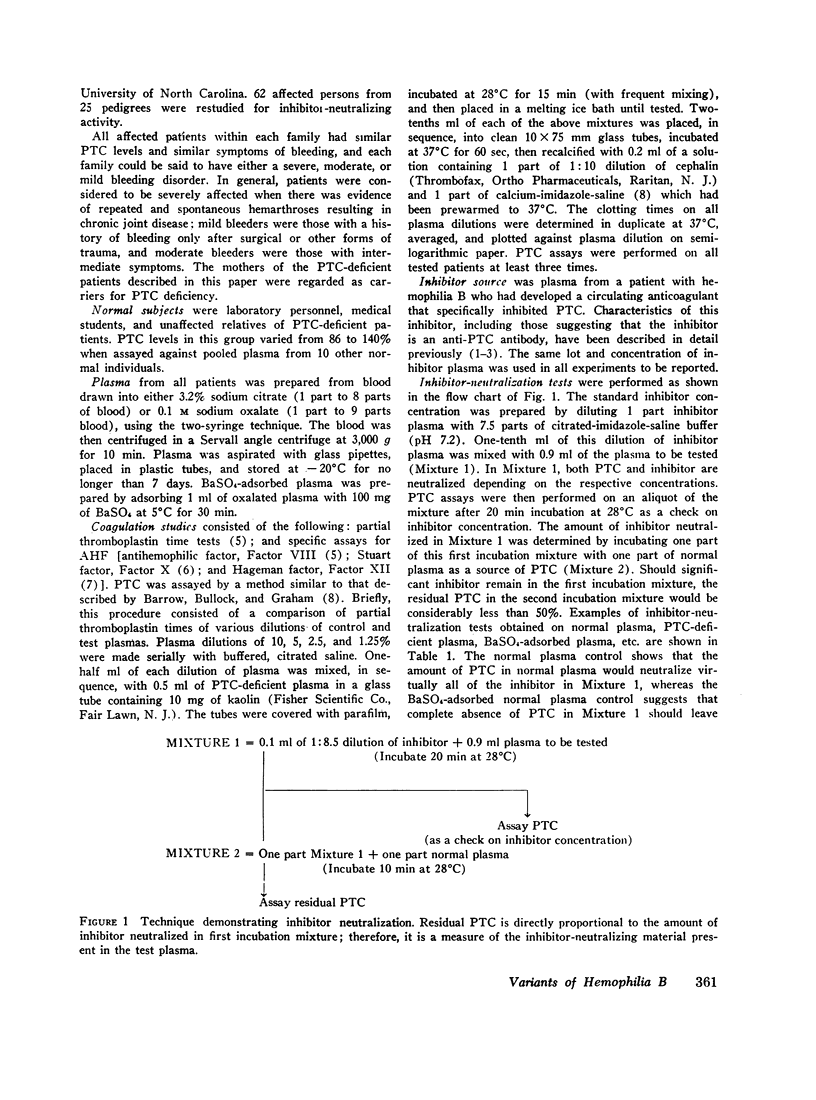
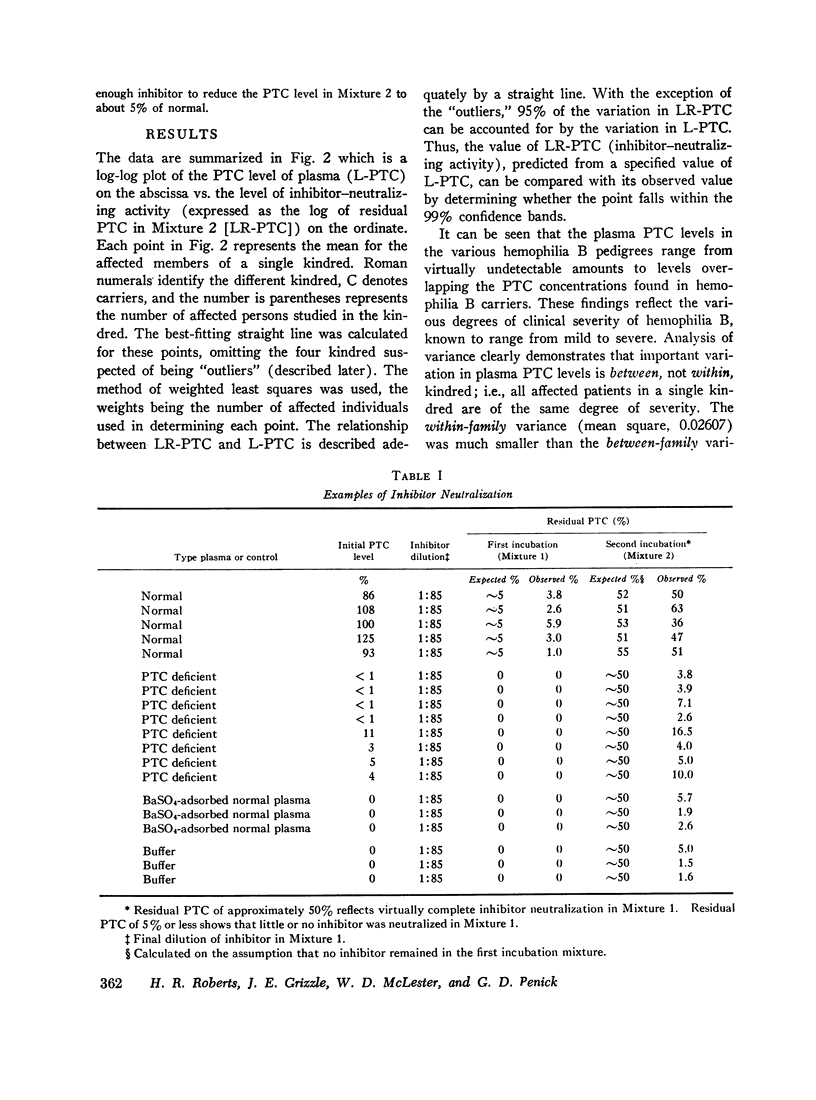
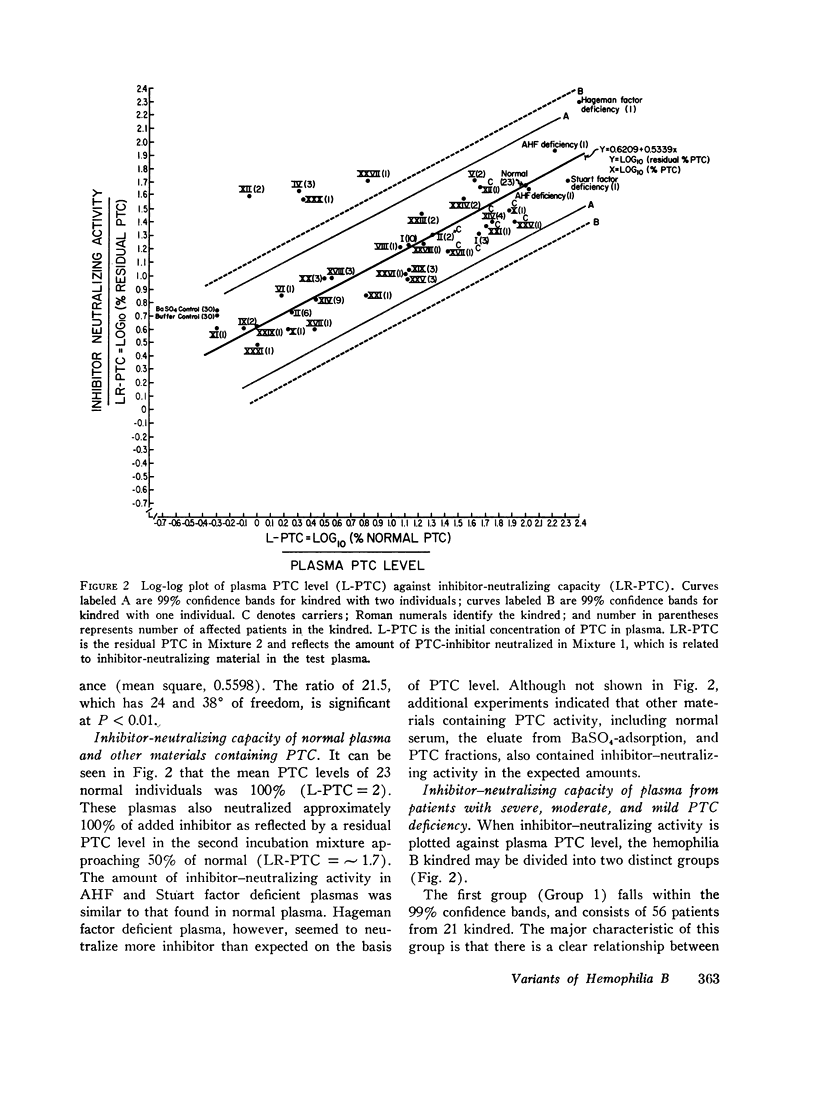
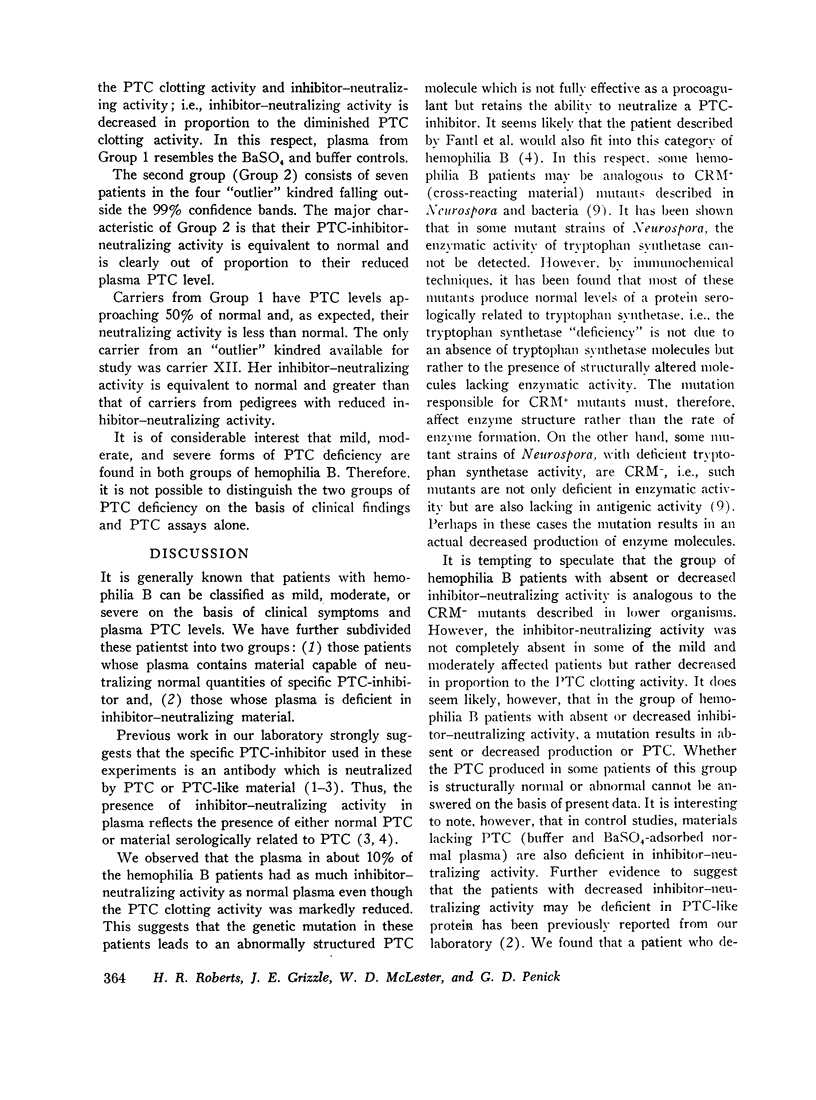
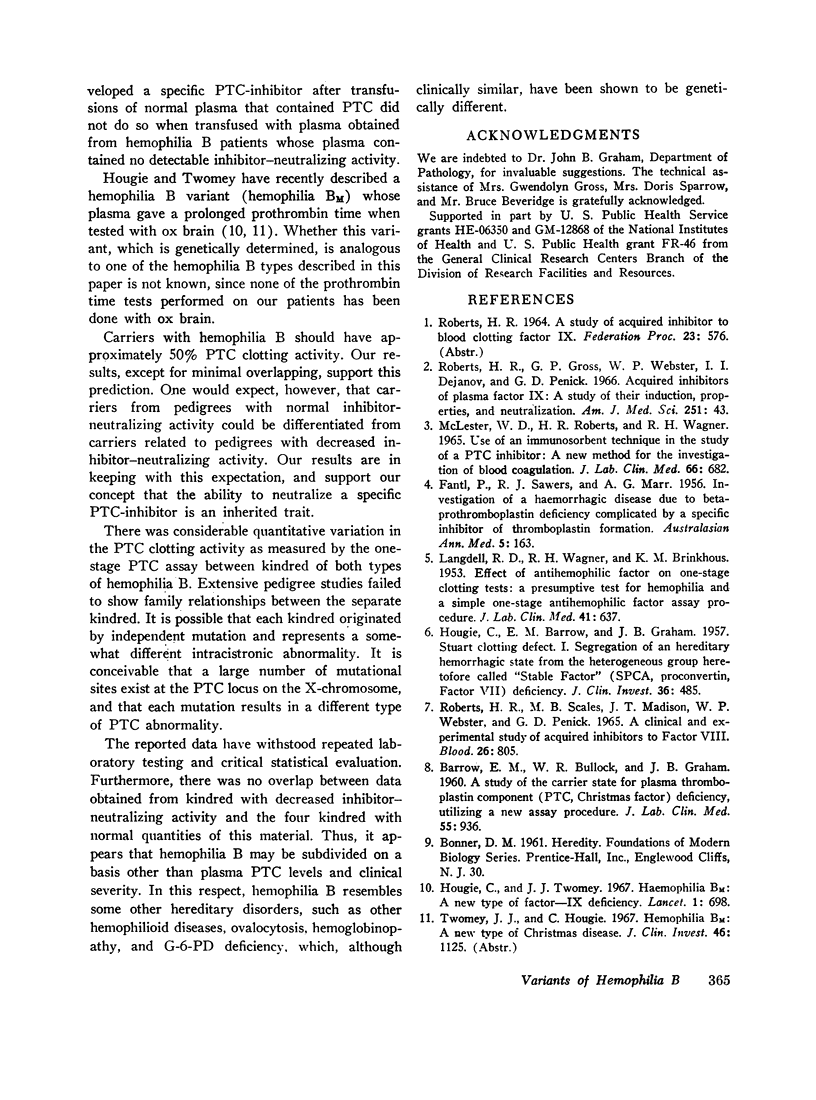
Selected References
These references are in PubMed. This may not be the complete list of references from this article.
- BARROW E. M., BULLOCK W. R., GRAHAM J. B. A study of the carrier state for plasma thromboplastin component (PTC, Christmas factor) deficiency, utilizing a new assay procedure. J Lab Clin Med. 1960 Jun;55:936–945. [PubMed] [Google Scholar]
- FANTL P., MARR A. G., SAWERS R. J. Investigation of a haemorrhagic disease due to beta-prothromboplastin deficiency complicated by a specific inhibitor of thromboplastin formation. Australas Ann Med. 1956 Aug;5(3):163–176. doi: 10.1111/imj.1956.5.3.163. [DOI] [PubMed] [Google Scholar]
- HOUGIE C., BARROW E. M., GRAHAM J. B. Stuart clotting defect. I. Segregation of an hereditary hemorrhagic state from the heterogeneous group heretofore called stable factor (SPCA, proconvertin, factor VII) deficiency. J Clin Invest. 1957 Mar;36(3):485–496. doi: 10.1172/JCI103446. [DOI] [PMC free article] [PubMed] [Google Scholar]
- Hougie C., Twomey J. J. Haemophilia Bm: a new type of factor-IX deficiency. Lancet. 1967 Apr 1;1(7492):698–700. doi: 10.1016/s0140-6736(67)92179-4. [DOI] [PubMed] [Google Scholar]
- LANGDELL R. D., WAGNER R. H., BRINKHOUS K. M. Effect of antihemophilic factor on one-stage clotting tests; a presumptive test for hemophilia and a simple one-stage antihemophilic factor assy procedure. J Lab Clin Med. 1953 Apr;41(4):637–647. [PubMed] [Google Scholar]
- McLester W. D., Roberts H. R., Wagner R. H. Use of an immunosorbent technique in the study of a PTC inhibitor: a new method for the investigation of blood coagulation. J Lab Clin Med. 1965 Oct;66(4):682–687. [PubMed] [Google Scholar]
- Roberts H. R., Gross G. P., Webster W. P., Dejanov I. I., Penick G. D. Acquired inhibitors of plasma factor IX. A study of their induction, properties and neutralization. Am J Med Sci. 1966 Jan;251(1):43–50. doi: 10.1097/00000441-196601000-00008. [DOI] [PubMed] [Google Scholar]
- Roberts H. R., Scales M. B., Madison J. T., Webster W. P., Penick G. D. A clinical and experimental study of acquired inhibitors to factor 8. Blood. 1965 Dec;26(6):805–818. [PubMed] [Google Scholar]


